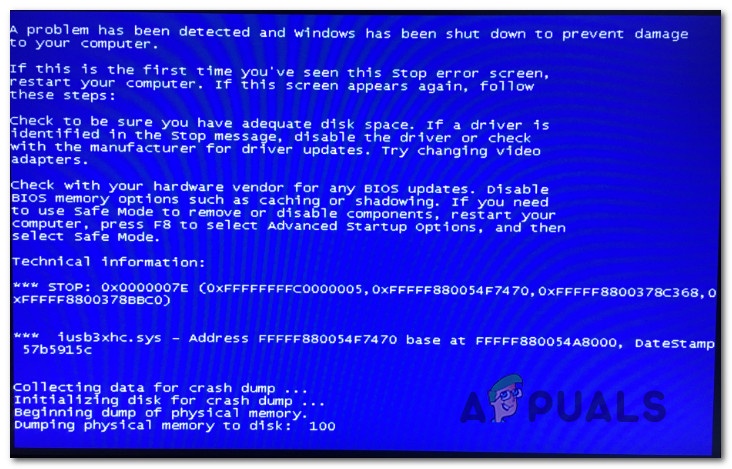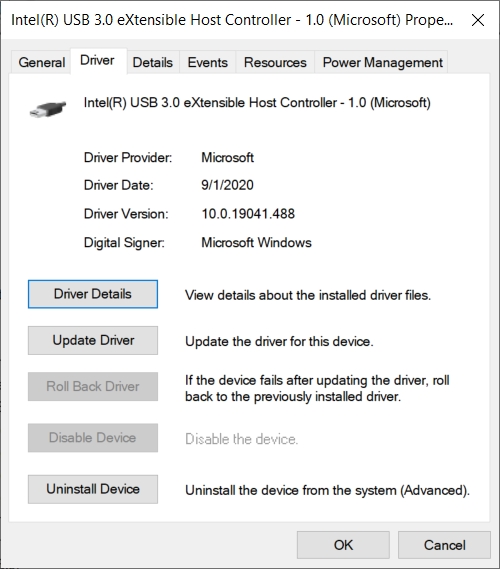

- #INTEL USB 3.0 EXTENSIBLE HOST CONTROLLER DRIVER CRASH SERIAL#
- #INTEL USB 3.0 EXTENSIBLE HOST CONTROLLER DRIVER CRASH DRIVERS#
- #INTEL USB 3.0 EXTENSIBLE HOST CONTROLLER DRIVER CRASH DOWNLOAD#
Note, The Intel USB 3.0 eXtensible Host Controller Driver is not supported on Windows XP* and Windows Vista*. This is a new version release, 5.0.4.43v2.
#INTEL USB 3.0 EXTENSIBLE HOST CONTROLLER DRIVER CRASH DOWNLOAD#
Click Download File to download the file.Try to set a system restore point before installing a device driver.
#INTEL USB 3.0 EXTENSIBLE HOST CONTROLLER DRIVER CRASH SERIAL#
Select Universal Serial Bus controllers then double click on the Intel USB 3.0 eXtensible Host Controller device or Intel USB 3.0 Root Hub device.
#INTEL USB 3.0 EXTENSIBLE HOST CONTROLLER DRIVER CRASH DRIVERS#
Due to this reason, many manufacturers hasn t update USB 3.0 drivers for Windows 10. Make sure the switch is in the powered mode position.Download Now INTEL USB 3 EXTENSIBLE DRIVERĭrivers HP dv4-5XXX / dv6-7XXX / dv7-7XXX / m7-1XXX. Some powered hubs also have a switch on them to switch back and forth between powered mode and nonpowered mode. If your hub is a powered hub, make sure that you have connected the power supply to AC power. If you have a non-powered USB hub, you may need to plug your device directly into the USB port on the computer. Non-powered hubs may not provide sufficient power for your USB device. Some USB devices fail to operate properly if plugged into non-powered USB hubs.Ĭheck to see if your USB hub has its own power supply (powered) or if it gets its power simply by plugging into the USB port on the computer (non-powered). If your computer is USB 2.0-compliant, and you're still getting low-speed results, see the Microsoft Knowledge Base article Advanced troubleshooting tips for general USB problems in Windows XP* for more detailed information.ĭevices do not work when plugged into USB hubs. Ensure High Speed USB is enabled in BIOS:. Refer to the manufacturer’s website for the latest drivers. Make sure you have the latest drivers for the USB device you are using. If you see messages in Windows like A Hi-speed USB device is plugged into a non-Hi-speed USB hub, try the following: USB 2.0 devices operate at USB 1.1 speeds (May be listed as USB Legacy)Īny USB mouse or keyboard should now work in DOS mode. Go to the Advanced > USB Configuration menu. Enter BIOS Setup by pressing F2 during boot.  Attach a PS/2 keyboard to the computer and boot the system. Responding to ScanDisk and other messages during the start-up sequence. Windows blue screen errors that ask you to Press any key to continue.
Attach a PS/2 keyboard to the computer and boot the system. Responding to ScanDisk and other messages during the start-up sequence. Windows blue screen errors that ask you to Press any key to continue.  Starting your computer from a floppy disk or leaving a floppy disk in the drive when you turn on or restart your computer. Starting your computer in MS-DOS mode (instead of opening a MS-DOS session from Windows). If USB Legacy Support is disabled in the BIOS, you will not be able to use your USB mouse or keyboard in any of the following situations: Go to the Configuration > Onboard Devices > USB menu. Enter BIOS Setup by pressing F2 during boot. If drivers are required for the USB device, make sure you have the latest driver from the device manufacturer. If errors in Device Manager are present, reinstall the Intel® Chipset Driver Software. Check Device Manager for errors on USB and system devices. Make sure all drivers have been properly installed: If you plug in a USB device and it is not detected in Windows*, check the following: Support for Intel® USB 3.0 eXtensible Host Controller Driver This guide provides tips for troubleshooting issues related to USB on Intel® Desktop Boards.
Starting your computer from a floppy disk or leaving a floppy disk in the drive when you turn on or restart your computer. Starting your computer in MS-DOS mode (instead of opening a MS-DOS session from Windows). If USB Legacy Support is disabled in the BIOS, you will not be able to use your USB mouse or keyboard in any of the following situations: Go to the Configuration > Onboard Devices > USB menu. Enter BIOS Setup by pressing F2 during boot. If drivers are required for the USB device, make sure you have the latest driver from the device manufacturer. If errors in Device Manager are present, reinstall the Intel® Chipset Driver Software. Check Device Manager for errors on USB and system devices. Make sure all drivers have been properly installed: If you plug in a USB device and it is not detected in Windows*, check the following: Support for Intel® USB 3.0 eXtensible Host Controller Driver This guide provides tips for troubleshooting issues related to USB on Intel® Desktop Boards.







 0 kommentar(er)
0 kommentar(er)
